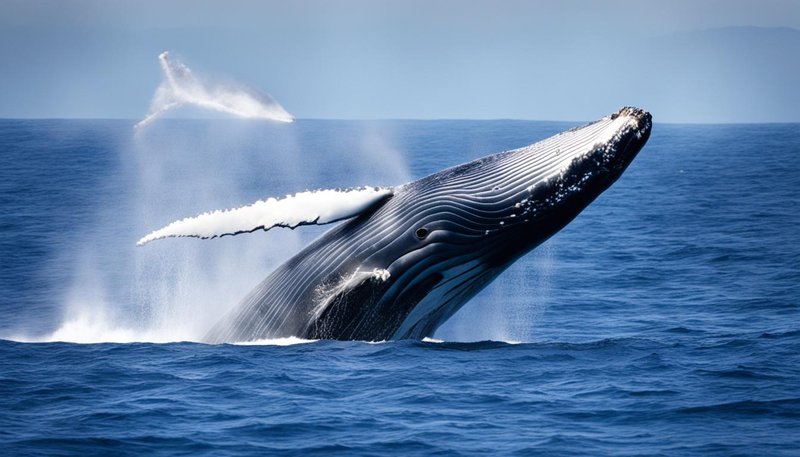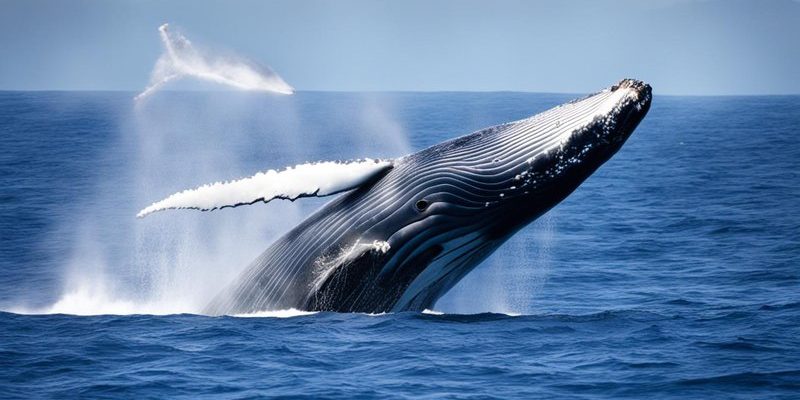
There are many types of whales, each with its own way of hunting, eating, and digesting. Understanding their diets and feeding strategies gives us a glimpse into their lives and how they interact with their underwater environment. So, grab a cup of coffee, and let’s dive into the watery world of whale eating habits!
Types of Whales and Their Diets
Whales can be divided into two main groups: baleen whales and toothed whales. The distinction isn’t just about teeth versus baleen plates; it reflects how they hunt and eat.
Baleen Whales
Baleen whales, such as the blue whale and humpback whale, are the largest animals on the planet. Instead of teeth, they have baleen plates made of keratin (the same stuff as our hair and nails). These plates act like a filter, allowing them to consume large quantities of small prey such as krill, small fish, and plankton.
When feeding, a baleen whale takes in huge gulps of water and then pushes it out through the baleen plates, trapping the food inside. It’s like scooping up a bowl of soup and only keeping the noodles inside while letting the broth out. Can you imagine swallowing a whole sea’s worth of food?
Toothed Whales
Toothed whales, like orcas and sperm whales, have teeth and are more predatory. They primarily eat larger prey, such as fish, squid, and even other marine mammals. Orcas, for instance, are known as the “wolves of the sea” because they hunt in packs and can take down large animals together. This means their diet can vary widely based on what’s available.
Toothed whales use echolocation to find their food. They send out sound waves and listen for echoes, allowing them to pinpoint the location and size of their prey. It’s incredibly effective and a little like using a flashlight in the dark to find your way.
Feeding Techniques
Different whale species have developed unique methods for feeding, tailored to their environments and the types of prey they consume. Let’s explore some of these fascinating techniques.
Bubble Net Feeding
Some baleen whales, like humpbacks, are known for an impressive technique called bubble net feeding. They swim in a circular pattern while releasing air bubbles from their blowholes. This creates a “net” of bubbles that traps small fish. Once the fish are contained, the whales swim upward with their mouths open, gulping in the trapped fish.
It’s a cooperative effort that requires timing and skill. You might imagine a group of friends coordinating a surprise party; everyone needs to be in sync to pull it off successfully!
Lunge Feeding
Another method is lunge feeding, which some species, like the fin whale, employ. They swim quickly towards their prey with their mouths wide open, effectively scooping up a massive amount of water and food in a single, swift motion. The sheer speed and strength required for this technique highlight the impressive physical capabilities of these giants.
Lunge feeding is thrilling to watch and showcases the whale’s ability to adapt to the challenges of capturing fast-moving prey.
The Role of Environment in Whale Diets
The ocean environment plays a crucial role in shaping whale diets. From the availability of food sources to the geographical location of different species, the ocean truly dictates what whales eat.
Seasonal Changes
Many whales migrate according to the seasons, following their food sources. For example, gray whales migrate from the Arctic to warmer waters to feed on amphipods during the summer. When resources become scarce in one area, they move to another, much like how we might go to a farmers’ market when our local grocery store runs out of fresh produce.
This migration is a remarkable feat, showing how whales are in tune with their environment and its cycles.
Impact of Climate Change
Climate change is a growing concern for whales and their diets. Rising ocean temperatures can affect the distribution of fish and other prey species. Changes in sea ice, for example, can disrupt the food chain, impacting everything from plankton to the whales that depend on them.
As food availability shifts, whales might struggle to find enough to eat, leading to challenges for their populations. This concern gives us all a reason to care about ocean health and conservation efforts.
Nutritional Needs and Energy Expenditure
Given their massive sizes, whales have unique nutritional needs. Their diets must provide enough energy to sustain their bodies, especially considering how much they eat daily.
Feeding Habits and Energy Intake
For example, a blue whale can eat up to 4 tons of krill each day! That’s like consuming about 20,000 cheeseburgers daily! They spend several hours each day feeding, optimizing their energy intake to support their large bodies.
This incredible consumption isn’t just about quantity; it’s also about quality. Whales need a balanced diet rich in nutrients to thrive and maintain their health.
Digestive System Adaptations
Whales have adapted digestive systems suited for their diets. The process of digestion can take days, allowing them to extract all the necessary nutrients from their food. Blubber, which is a thick layer of fat, is especially vital. It provides energy and helps with buoyancy and temperature regulation.
In this way, whales are not only fascinating creatures to observe but also marvels of biological engineering!
Conservation and the Future of Whales
As we learn about the diets and feeding habits of whales, it’s essential to consider their future. Many species face threats from overfishing, pollution, and climate change, all of which impact their food sources.
Protective Efforts
There are several conservation efforts underway to protect whale populations and their habitats. Marine protected areas (MPAs) help provide safe zones for whales, ensuring they have access to the food they need without the encroachment of human activities.
These efforts are crucial not only for whale survival but also for the overall health of our oceans. Healthy oceans mean healthy ecosystems, which benefit us all!
Public Awareness and Action
Raising public awareness about the importance of whales and their diets can inspire action. You can help by supporting conservation organizations, reducing plastic use, and advocating for sustainable fishing practices. Every little bit counts!
By understanding and appreciating these gentle giants and their feeding habits, we can work towards a healthier planet for both whales and ourselves.
In conclusion, the diet and feeding habits of whales are as varied as the species themselves. From the massive blue whale filtering krill through its baleen plates to the aggressive hunting tactics of orcas, each feeding strategy reflects their unique adaptations to life in the ocean. As we continue to explore and protect these magnificent creatures, let’s remember that their survival is closely tied to the health of our oceans. So the next time you hear about whales, think not just about their size or beauty, but also about what keeps them thriving in the deep blue sea.

